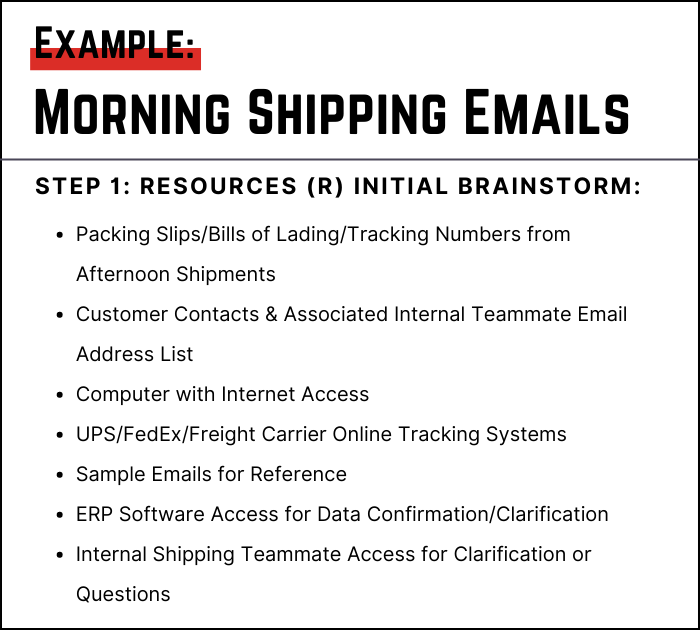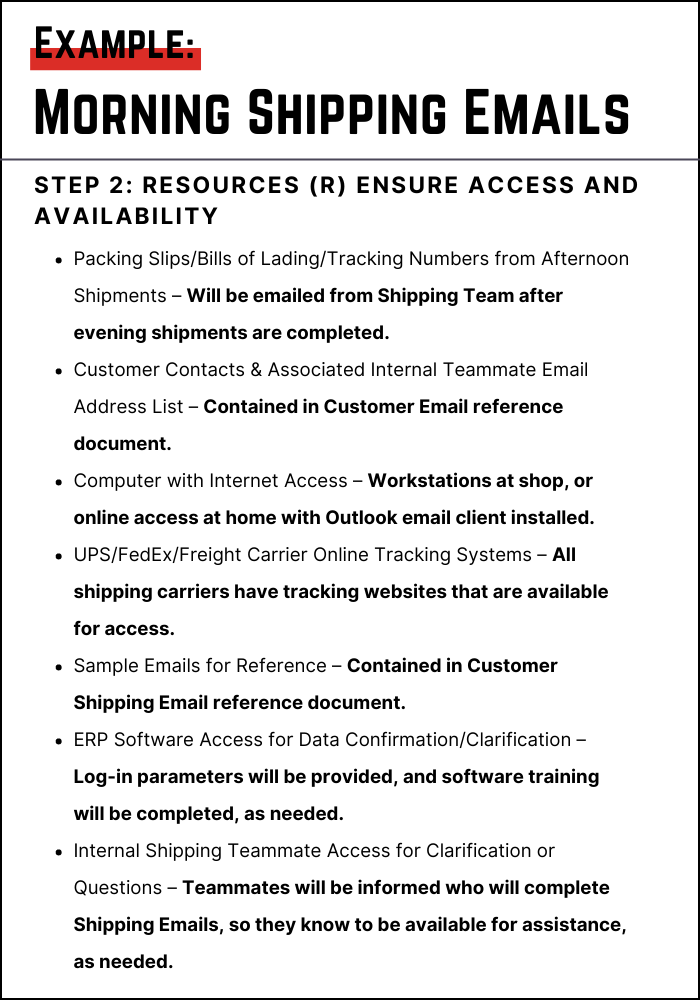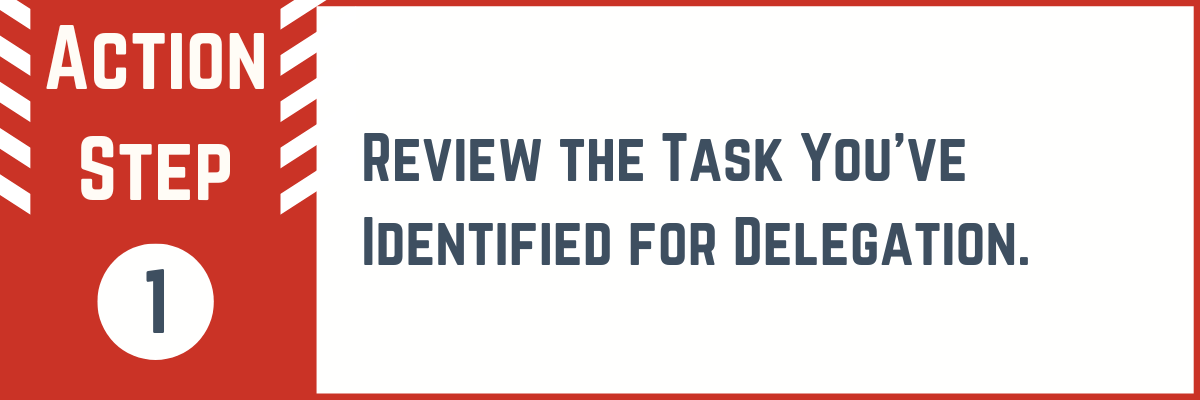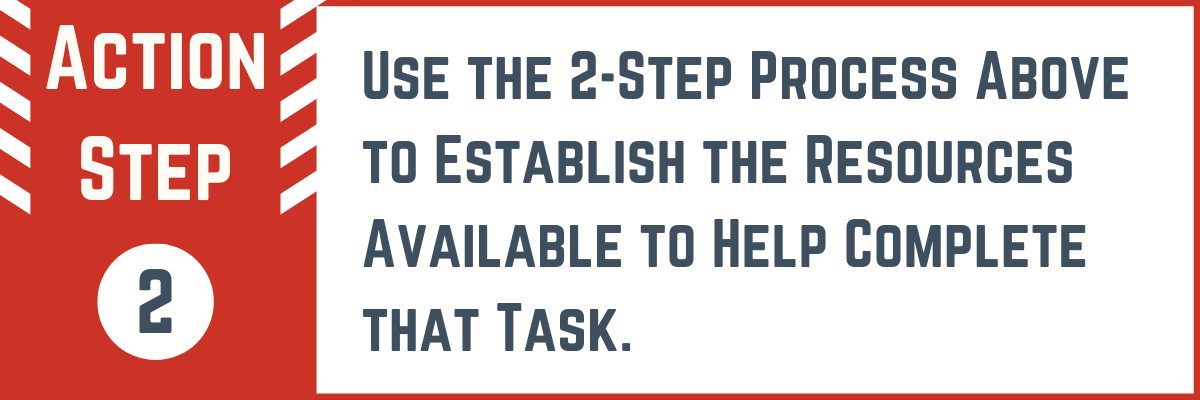How to Delegate with Confidence Series (Part 4 of 7)
You’re continuing to set things up to delegate an important item. You’ve identified the Desired Results (DR) and the Guidelines (G) for the task. Next, you’ll need to establish the Resources (R) that will be available for use so that the task can be effectively done.
In 7 Habits of Highly Effective People, Stephen Covey outlines the DR GRAC Delegation Process that has proven to be both solid and practical to use. Employed all over the world, the successful methodology helps slow down and clarify delegating so that Win-Win situations are established as the work gets done.
In this installment of our How to Delegate with Confidence Series, we’ll discuss the third step of the framework: the Resources (R). Hopefully, in Steps 1 and 2 of the Series, you identified an item to delegate and by now, you’ve established both your Desired Results (DR) and your Guidelines (G) for the task. The task is likely one you’re familiar with and the next step is to identify the Resources (R) that will be available, or needed, to get the job done.
What Help Will They Need to Complete the Task?
Think about the item you want to delegate. In the first steps, you specified the Desired Results (DR) you are seeking and the Guidelines (G) by which the task is to be completed. Now you’ll identify the Resources (R) that will be available or needed to complete the item. Think of the Resources as any of the people, data, materials, money, or services that they’ll need to ensure proper completion of the task.
How you have always done the task typically combines external Resources (other things or people) and internal Resources (your knowledge or skills). Obviously, for the task to be delegated so you’re not directly involved, you’ll need to consider alternative Resources that would substitute for your internal Resources. A big part of the DR GRAC Delegation Process is to ensure the Resources that can be referred to or employed won’t involve engaging directly with you. The closer you remain to the completion of the task after it’s been delegated, the less it will feel like you’ve empowered the other person. Once delegated, you’ll want to make sure the needed Resources are available without your involvement, if possible. The further you take yourself out of the task, the more ownership the person completing the task will have.
Resources (R) – Step 1. Initial Brainstorm
Take a few minutes and list the Resources available for the task as completely as possible. Quick notes or a bulleted list are fine at this point, just get as much information down as possible. What materials, people, budgets, or information will be available for them to complete the task? Just get everything down as quickly as you can.
Here are a few questions to help you create this list:
- What are the primary materials they’ll need to complete the task?
- Is there a budget of time or dollars that they’ll need to stay within?
- Whose help can they seek out if they need help (preferably someone other than you!)?
- What information will be necessary to complete the task and how will they access it?

Resources (R) – Step 2. Evaluate Each Item – Is the Resource Already Available, or Will Access Need to Be Provided?
Next, take the list you created and review it to determine if each Resource is already available to the person taking on the delegated task.
- For materials or information, ensure it’s clear where and how to access those materials or information. Making it easy to get what they need without your help will help facilitate positive action.
- For people, make sure they have access to the necessary people and provide an introduction that will help facilitate positive support of the completion of the task.
- For a budget, ensure it’s clear how to access the funds and request those dollars.

Resources (R) – Final Thoughts
Clearly establishing the available Resources that will be required or helpful for the completion of the task is the third step in Delegating with Confidence. Your ability to ensure the person you are delegating the task to understands what tools, materials, budgets, and people are available will help guarantee the task is able to be completed, preferably without you being one of those Resources. You’ll prompt the people on the Resource list, so they know to make themselves available to assist, as needed, with the task. Advanced warning to those Resource people will clear the path for assistance. It can also prevent the need for you to get pulled back into the situation to establish the authorization and requirement for help.
Getting the Resources right can go a long way to facilitate the task being completed without your direct involvement.
Here are your two Action Steps from this section:



